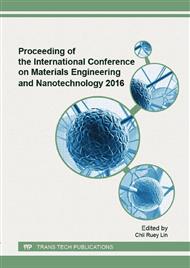p.70
p.77
p.82
p.86
p.91
p.95
p.101
p.105
p.109
Experimental and Theoretical Analysis of I-Pillars of Noise Barriers Made of Prestressed Steel Fiber Concrete, Prestressed Concrete and Reinforced Concrete with Footings Length of 600 mm
Abstract:
This paper deals with the experimental testing and theoretical analysis of the flexural load-bearing capacity of I-shaped pillars in noise barriers made of reinforced concrete, prestressed concrete and prestressed steel fiber reinforced concrete. The pillars were loaded as a cantilever under a flexural load, which corresponds to their actual loading when the effect of wind on the panels of the noise barrier is taken into account. For the purpose of the present research, three specimens of I-pillars were tested. The results of the experimental loading tests, as well as the calculated results and the comparison between them, are herein presented.
Info:
Periodical:
Pages:
105-108
Citation:
Online since:
September 2016
Authors:
Price:
Сopyright:
© 2016 Trans Tech Publications Ltd. All Rights Reserved
Share:
Citation:


